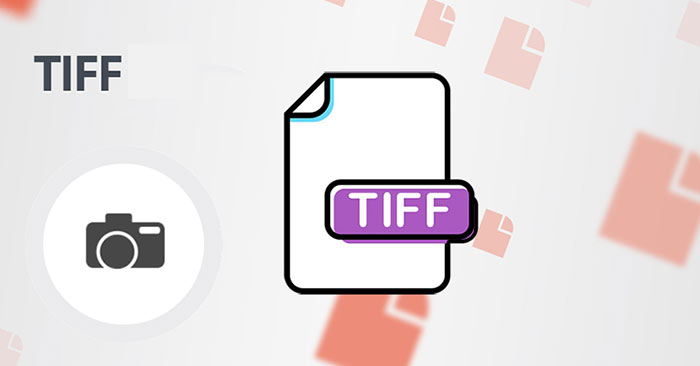What is 'Privacy Sandbox' in Google Chrome? How to use?
Recently, Google has been trying to improve the way the advertising industry (and many other sectors) tracks users' online activities. The focus of these changes is a feature in Google Chrome called 'Privacy Sandbox' that Google officially introduced in early 2021.
So what feature is this really? What specific uses does it have? Let's find out right below.
What is Privacy Sandbox?
First, it is necessary to confirm that Privacy Sandbox is a FLoC (Federated Learning of Cohorts) feature. This is essentially a machine learning algorithm technology that allows devices to collaborate to learn a prediction model, while ensuring that all training data is kept on the device.
This technology was first introduced by Google in a blog post in January 2021, and is expected to become a key solution in addressing privacy issues related to web advertising. It can be roughly understood that this is the method that Google uses to remove and replace third-party cookies.
 What is 'Privacy Sandbox' in Google Chrome? How to use? Picture 1
What is 'Privacy Sandbox' in Google Chrome? How to use? Picture 1
In fact, by tracking users through third-party tracking cookies, Google can build a profile of the things users are interested in, from their favorite sports teams to purchasing trends. shopping, searching online. Then, this identification data will be used to target users with specific ads that are more likely to pay attention and click on them.
The problem with tracking cookies is that they identify each user as a unique token. While the user's identity will not necessarily be revealed, each individual will still be treated by Google as a unique entity, albeit only for advertising purposes. FLoC aims to change this fundamental aspect of online advertising.
Instead of tracking users through tracking cookies, FLoC runs on the browser side and analyzes users' online behavior locally. Using this type of browser history data, Chrome can monitor your browsing activity and place you into specific groups called 'cohorts', which include other users with similar interests and habits. familiar. Chrome will then report these cohorts to sites that take advantage of FLoC.
In other words, instead of letting third-party websites track your browsing activity with third-party cookies, Chrome itself takes over the role of tracking your browsing activity — locally. suite — and provide the websites you visit with the types of advertising that are likely to interest you.
Google's Privacy Sandbox aims to enhance the privacy of Internet users while trying to protect advertisers' earnings. This is clearly a difficult path to walk because much of the Internet is funded by advertising or tracking. Privacy Sandbox's core functionality is to phase out third-party cookies, replacing them with a FLoC-based model, designed to enable targeted advertising while providing better privacy.
- User browsing data is stored on the device: Unlike traditional methods where user data is sent to an external server, FLoC processes the user's browsing history locally on the device their own. This ensures that personal browsing data is not shared with Google or advertisers.
- Create groups: FLoC uses an algorithm to analyze users' device browsing history and, based on this analysis, groups users into a "group" with thousands of other users. Each cohort is comprised of users with similar browsing patterns or interests. Cohorts are also very dynamic and are updated periodically.
- Share group IDs, not personal data: Instead of sharing individual browsing data, only group IDs - unique identifiers for each group of users with similar interests - are shared with websites and advertisers. This way, advertisers can target ads based on the common interests of a group without knowing the personal browsing history of users in that group.
- Privacy protection: Techniques such as differential privacy ensure that groups cannot be used to identify individual users, which is important for preventing Fingerprinting, a common technique used to track users on websites.
Whether or not Privacy Sandbox works properly is part of the reason Google initially only migrated 1% of users to the new process. Google's Privacy Sandbox is also available on Android.
How to turn off (or turn on) Privacy Sandbox on Chrome
By default, the 'Privacy Sandbox' trial option is enabled for all Chrome users. However, you can opt out of this FLoC feature simply by changing a simple settings setting within your Chrome.
To do this, first launch Chrome on your PC and click menu > Settings.
 What is 'Privacy Sandbox' in Google Chrome? How to use? Picture 2
What is 'Privacy Sandbox' in Google Chrome? How to use? Picture 2
On the Settings screen, click 'Privacy and Security' in the left menu. Then, in Privacy and Security settings, click on the 'Privacy Sandbox' option.
 What is 'Privacy Sandbox' in Google Chrome? How to use? Picture 3
What is 'Privacy Sandbox' in Google Chrome? How to use? Picture 3
If you don't want to use this feature, just press the toggle switch to turn it off. (Gray is off and blue is on).
 What is 'Privacy Sandbox' in Google Chrome? How to use? Picture 4
What is 'Privacy Sandbox' in Google Chrome? How to use? Picture 4
Now, your Chrome browser will no longer participate in FLoC testing. However, when Google rolls out Privacy Sandbox as a stable feature to all Chrome users, you will most likely no longer be able to turn it off.
You should read it
- 5 extensions to help protect your privacy while surfing the web on Firefox
- Growth is booming, reaching $ 38 billion but Zoom is facing security and privacy concerns
- What is Privacy Dashboard on Android 12? Why can it be considered a 'breakthrough' in terms of privacy?
- Change the following 7 iOS settings to better Safari security
- Privacy practices on Google Chrome
- Zoom sued for hiding security flaws, including alleged vulnerability to hackers
- 7 security mistakes you often make
- 8 best secure email services ensure your privacy
- What is Tor? Your guide to using the private browser
- Security guide on Pinterest
- How to use NEV Privacy - Hide Pictures hide photos, apps on Android
- What about privacy and privacy issues if VR and AR are hacked?






 What is a sandbox and how does it sandbox a program?
What is a sandbox and how does it sandbox a program? Privacy practices on Google Chrome
Privacy practices on Google Chrome What is a sandbox? The best Sandbox software
What is a sandbox? The best Sandbox software 10 new points of Chrome 10
10 new points of Chrome 10 How to configure Windows Sandbox on Windows 10
How to configure Windows Sandbox on Windows 10